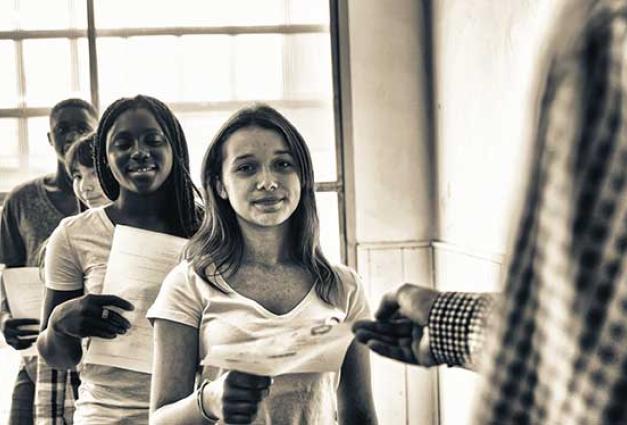For a 6-year-old, one of the most powerful educational tools may be direct instruction, according to new research on how children learn about prejudice. Scientists found that as children get closer to age 10, they begin to rely more on their own experiences rather than what people tell them – but for youngsters, instruction trumps experience.
"Young children are information hungry – they are eagerly searching for general rules to help in mapping out their social worlds,” write Sonia Kang and Michael Inzlicht of the University of Toronto in this month's Personality and Social Psychology Bulletin. Across two studies that investigated how children learn about rejection, they found that external instruction and experiences play distinct roles in shaping how children characterize other groups of people.
Previous research has shown that between ages 3 and 6, children learn about and begin to apply stereotypes and can recognize overt discrimination. But between 6 and 10 years old, they become aware of other people's stereotypes, able to perceive subtle discrimination by age 10. The new study sought "a deeper understanding of how children learn that they themselves may be targets of discrimination” by members of other groups, Kang says.
Kang and Inzlicht recruited some 300 first-, third-, and fifth-grade students from an ethnically diverse elementary school in Toronto. The researchers created two arbitrary groups, the Reds and the Blues, and placed all the children in the Red group. They then provided opportunities for the Red group (ingroup) to learn about the Blue group (outgroup) by either instruction, experience, or both.
In the instruction condition, each child heard that "Kids in the Blue group are really mean to kids in the Red group” and "you’ll really notice how Blues are mean to you.” In the experience condition, researchers orchestrated a negative experience with the outgroup, where the Blue group member could have left the child 10 tokens (either stickers or candies) but instead left them nothing at all.
The first grade students who heard about the mean Blue group perceived them more negatively than those who received no tokens from the Blue group. The reverse was true with fifth graders – the older children judged the other group most on the number of tokens provided. In another set of conditions where some children were given negative information about the Blue group but then received many tokens from them, the divide between first and fifth grades was also clear: For the first graders, the impact of instruction was powerful enough to undermine the contradictory information about the tokens, while the opposite was true for the fifth graders.
The results show that young children's "expectations about experiencing prejudice will be shaped by the beliefs that are communicated to them by adults,” Kang says. "The expectations that are established in early childhood are likely to form the building blocks for beliefs about stigmatization later in life.”
Kang and Inzlicht point out that this study demonstrated the power of instruction with a one-time message from a previously unknown experimenter. The power commanded by a parent, sibling, or teacher who has a closer relationship and the opportunity for repeat messaging would be even stronger.
Teachers and parents should focus more on teaching young kids about positive elements of equality and diversity, Kang says, while avoiding overly strong negative warnings about discrimination. "While it is important to equip children with the ability to recognize discrimination when it happens, we don’t want them to shut themselves off from the possibility of positive relationships with members of groups different from their own.”
At the same time, "our work suggests that older children are going to be more influenced by their own experiences, so it’s not enough for us to lecture to them about equality and diversity-related issues,” she says. "We need to help create situations and environments that foster positive experiences among children from all backgrounds.”
The paper "Stigma Building Blocks: How Instruction and experience Teach Children about Rejection by Outgroups” was published in the March 2012 issue of Personality and Social Psychology Bulletin, a journal published by the Society for Personality and Social Psychology (SPSP).




